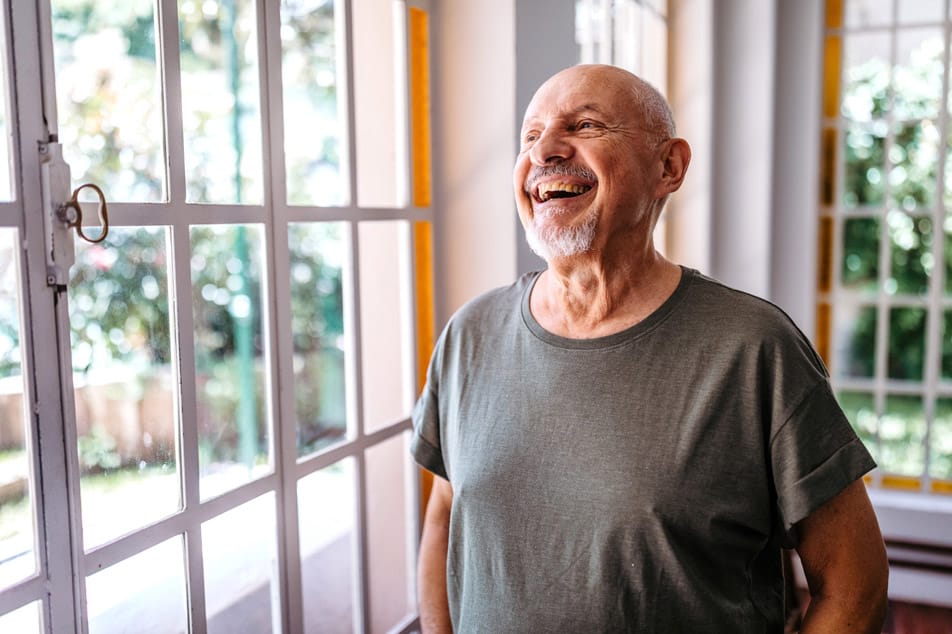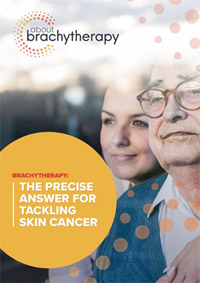
Treatment options
There are several options available to treat non-melanoma skin cancer (basal cell carcinoma and squamous cell carcinoma). These include:1
- Surgery
- Radiation therapy:
- External beam radiation therapy – radiation from outside in
- Brachytherapy (interventional radiotherapy) – bringing the source of radiation close to the tumor
- Other therapies: destructive methods (cryosurgery), photodynamic therapy, topical medications, laser, chemotherapy

The most common modality used for treating skin cancer is surgical excision.
There is however a subgroup of patients which will be better off when treated with radiation therapy. Considerations of cosmetic and/or functional outcome and considerations of risks of surgical procedures might lead to the selection of radiation therapy as treatment of choice.2
Based on existing clinical evidence, the National Comprehensive Cancer Network, an alliance of the world's leading cancer centers, concluded that topical therapies such as creams and photodynamic therapy should only be considered if surgery and radiation therapy are not possible.2
Radiotherapy including brachytherapy is a good alternative to surgery, not only in cases where surgery is not possible but also in cases where expected functional or cosmetic outcome would be better with radiation therapy than with surgery (forehead, ear, nose, scalp areas) and in elderly or frail patients.3,4,5,6
Advantages and disadvantages of skin cancer treatments
Each treatment has advantages and disadvantages. These should be considered and discussed with your healthcare professional when planning your treatment.
| Treatment | Advantages | Disadvantages |
|---|---|---|
Surgery (such as excision and Mohs surgery) | High efficacy, margin control possible, single day procedure.6 | Healthy tissue is also removed Often restriction of activity to allow wound healing, scarring Often need for reconstructive procedures Risk of wound healing complications. |
External beam radiotherapy (EBRT) | Non-invasive, painless Efficacy is comparable to surgery Allows patient to continue taking prescribed medications.7 | The treatment course can be long (4–6 weeks). Not suitable for all patient groups.6 |
Brachytherapy | High efficacy, excellent functional and cosmetic outcome, allows patient to continue taking prescribed medications. Less fractions than EBRT course (2-3 times a week, rather than daily), which translates into fewer treatment visits for a patient, particularly useful for elderly and frail patients.3 | Not available at all hospitals Multiple (usually 6-8) fractions Can be invasive depending on the brachytherapy technique. |
Other therapies | Often non-invasive; safe and effective alternative to traditional treatment.8 | Not suitable for all patients: factors such as tumor location, size, cell type, should be taken in consideration. More studies are required to prove the efficacy of treatment. |

Brachytherapy:
The Precise Answer for Tackling Skin Cancer
References
- National Cancer Institute. Available at: https://www.cancer.gov/types/skin/patient/skin-treatment-pdq#_59. Accessed June 2021
- Bichakjian CK et al. NCCN Clinical Practice in Oncology (NCCN Guidelines®) Basal Cell Skin Cancer 2016. Available at: https://jnccn.org/view/journals/jnccn/14/5/article-p574.xml Accessed June 2021
- Guinot JL et al. Radiother Oncol 2018; 126:377-85. Available at: https://doi.org/10.1016/j.radonc.2018.01.013 Accessed June 2021
- Frakulli R et al. J Contemp Brachytherapy 2015; 7(6):497-502. Available at: https://dx.doi.org/10.5114%2Fjcb.2015.56465 Accessed June 2021
- Bussu F. et al. Laryngoscope 2016; 126(2):367-71. Available at: https://doi.org/10.1002/lary.25498 Accessed June 2021
- Newlands C et al. J Laryngol Otol 2016: 130:S125-S132. Available at: https://doi.org/10.1017/S0022215116000554 Accessed May 2021
- Drucker AM et al. Ann Intern Med 2018; 169(7):456-66. Available at: https://doi.org/10.7326/m18-0678 Accessed June 2021
- Altun E. et al. Dermatol Ther 2021; 34(1):e14476. Available at: https://doi.org/10.1111/dth.14476 Accessed June 2021

